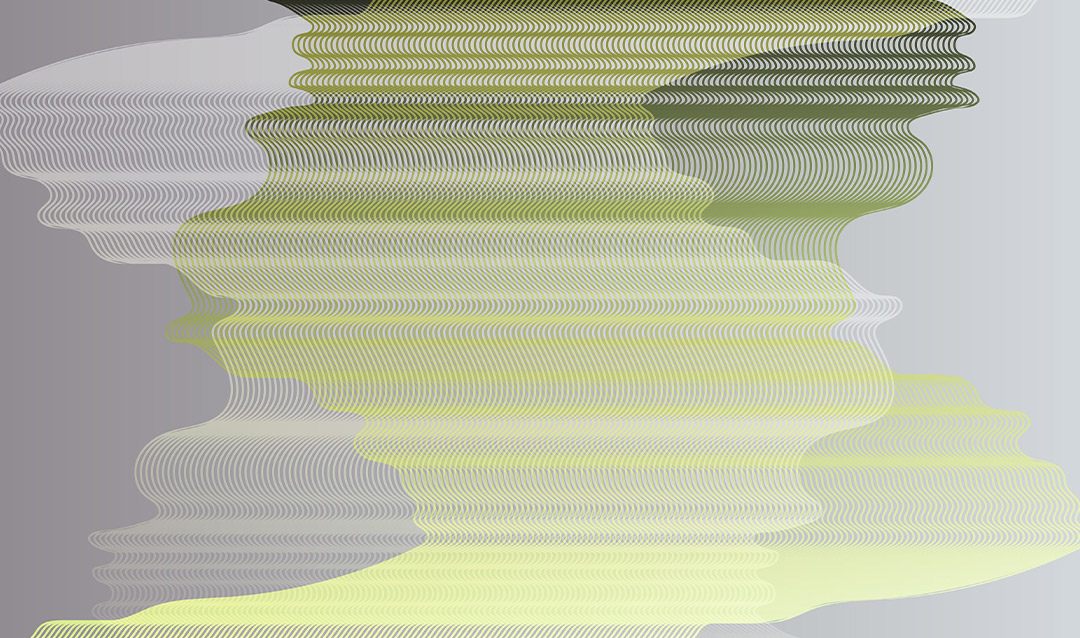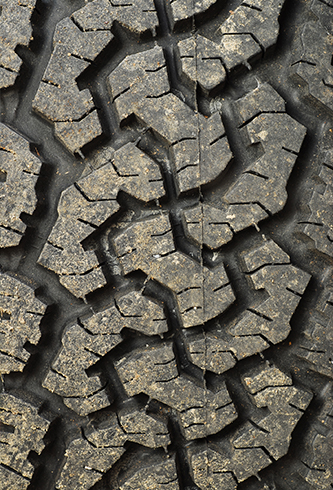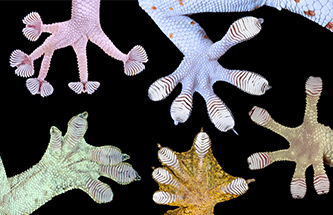A car’s brakes rely on friction, which converts its overall kinetic energy into thermal energy. An increase in energy dissipation—in this case, the conversion of the vehicle’s overall kinetic energy to heat—increases friction. But a lubricated surface, such as a wet road, gets in the way of that energy dissipation, making it far more difficult for a vehicle to stop.
“The idea [for this project] was: Can we come up with a way to somehow increase the dissipation of energy when other mechanisms are muted?” says Jagota.
The two mechanisms on which Jagota and his colleagues will focus are based on recent discoveries by team members.
The first, meso-scale dislocation arrays, are interfaces with a periodic array of features that accommodate misorientation by generating meso-scale (between the atomic and macroscopic scales) interfacial dislocations. In their previous work, Jagota and his colleagues discovered that they could modulate friction between shape-complementary surfaces by controlling the nature and density of interfacial dislocations. In other words, by controlling the relative misorientation of patterned elastomeric, or rubber-like, surfaces, they could passively control the friction between them, and actively control the friction by applying external pressure. This discovery, the team writes, “offers a novel way of controlling friction and adhesion of soft material interfaces.”
Jagota and his colleagues aim to develop a way to pattern the surface of a generic soft solid with periodic features that result in the formation of interfacial dislocation arrays. These designed dislocation arrays will enable the control of the friction of a soft surface. This mechanism could potentially provide a new, more precise method of assembling elastomeric products, like those used in the manufacturing of tires.
The second mechanism, a new form of elastic hysteresis, relates to energy dissipation and enhanced tire friction. Elastic hysteresis occurs when a tire moves along the road and is repeatedly stretched and compressed. In many soft materials at the molecular scale, the team writes, friction arises because much of the energy that goes into stretching molecules is lost as heat when they slip back to an unstretched state. The team has found that if they properly patterned the surface of a soft material with periodic variation in properties, and slid an indenter across the surface, the periodic transitions of the sliding glass indenter across the soft and hard regions of the patterned surface result in extra energy loss through the fluid layer on the material surface. Thus, the indenter “experiences periodic resisting force even in the absence of true friction between the surfaces.” This result, the team writes, is a form of elastic hysteresis—it increases the sliding friction of lubricated soft materials by using the structures on the surface of the materials to store and then unstably release energy.
The team details these results in a paper published in the journal Soft Matter.
A previous NSF GOALI collaborative research project, also with Cornell and Michelin, saw Jagota investigating surface architectures for enhancement of sliding and static friction against rough and smooth surfaces, also targeting the friction of tires.
In this collaboration, titled “Designing Structures to Enhance Friction of Rubbery Materials,” Jagota and his Lehigh team were responsible for fabrication and experiments, while Hui and his team worked on theory and modeling, and Michelin contributed testing and guidance. They published their work, which created new bio-inspired film-terminated structures with unique friction characteristics, in a paper titled "Strongly Modulated Friction of a Film-Terminated Ridge-Channel Structure" in Scientific Reports, a journal of Nature.







